- Home
- Stephen Hawking
A Stubbornly Persistent Illusion Page 23
A Stubbornly Persistent Illusion Read online
Page 23
Recapitulating, we may say that according to the general theory of relativity space is endowed with physical qualities; in this sense, therefore, there exists an ether. According to the general theory of relativity space without ether is unthinkable; for in such space there not only would be no propagation of light, but also no possibility of existence for standards of space and time (measuring-rods and clocks), nor therefore any space-time intervals in the physical sense. But this ether may not be thought of as endowed with the quality characteristic of ponderable media, as consisting of parts which may be tracked through time. The idea of motion may not be applied to it.
INTRODUCTION TO
“GEOMETRY AND EXPERIENCE”
Mathematics and physics are seen as two sides of the same coin. They are quite different, however. The truth of physics and other natural sciences can only be established through observation and experiment. Even then, the best we can hope to say is that a theory hasn’t been proven wrong, or “falsified” in the terminology of Karl Popper, rather than being proven correct. Mathematics, on the other hand, could be developed and established even by someone with no direct experience of the physical world.
Geometry seems to lie in an intermediate position between the physical sciences and pure math. In “Geometry and Experience” (1921), Einstein notes that while propositions may be proven from stated axioms in geometry, the axioms themselves cannot be. If one is to study “practical geometry,” the postulates must be based on the physical properties of the real universe.
Euclid’s Elements, one of Einstein’s first inspirations as a young thinker, laid down a set of geometric postulates that seem obvious from every experience; two straight lines, for example, can have at most one intersection, parallel lines remain parallel, and so on. Euclidean geometry seems to so perfectly describe our world on the human scale, and is in such accord with our intuition, that Newton’s mechanics seem to flow straight from Euclid’s geometry.
In the mid-nineteenth century, however, a number of thinkers began exploring non-Euclidean geometry, which starts from very different axioms than Euclid did and describes curved surfaces. Lines drawn on a sphere, for example, can intersect each other more than once. Consider that on a globe, lines of longitude meet at both the North and South poles. One of Einstein’s greatest contributions to physics was his recognition that non-Euclidean geometry might fundamentally be the correct description of the shape of the universe.
General relativity is thus a way of describing the geometry of the universe. As John Archibald Wheeler has put it, “Matter tells space-time how to curve, and space-time tells matter how to move.” What does the curvature of the universe mean? On a small scale, it describes the motions of the planets around the sun, and the gravitational pull between you and the earth.
On larger scales, there may be an overall curvature to the universe as well. This can be likened to the earth, which has both an overall sphericity and little bumps and ridges (mountain ranges) as well. The shape of the universe describes whether it is finite or infinite as well as what its ultimate fate will be.
The issues which Einstein raises in “Geometry and Experience” are still with us. Recent measurements from the Wilkinson Microwave Anistropy Probe and other experiments suggest that on the largest scales, the universe is flat, while gravitational wave experiments like the Laser Interferometer Gravitational Wave Observatory (LIGO) and the Laser Interfoerometer Space Antenna (LISA), scheduled to launch in 2015, aim to measure the bumps and wiggles in space-time on the smallest scales. On all scales, though, our intuition is of little use, and it is only by direct observation that we may make a “practical geometric” measurement of the shape of space-time.
GEOMETRY AND EXPERIENCE
An expanded form of an Address to the Prussian Academy of Sciences in Berlin on January 27th, 1921.
One reason why mathematics enjoys special esteem, above all other sciences, is that its laws are absolutely certain and indisputable, while those of all other sciences are to some extent debatable and in constant danger of being overthrown by newly discovered facts. In spite of this, the investigator in another department of science would not need to envy the mathematician if the laws of mathematics referred to objects of our mere imagination, and not to objects of reality. For it cannot occasion surprise that different persons should arrive at the same logical conclusions when they have already agreed upon the fundamental laws (axioms), as well as the methods by which other laws are to be deduced therefrom. But there is another reason for the high repute of mathematics, in that it is mathematics which affords the exact natural sciences a certain measure of security, to which without mathematics they could not attain.
At this point an enigma presents itself which in all ages has agitated inquiring minds. How can it be that mathematics, being after all a product of human thought which is independent of experience, is so admirably appropriate to the objects of reality? Is human reason, then, without experience, merely by taking thought, able to fathom the properties of real things?
In my opinion the answer to this question is, briefly, this:—As far as the laws of mathematics refer to reality, they are not certain; and as far as they are certain, they do not refer to reality. It seems to me that complete clearness as to this state of things first became common property through that new departure in mathematics which is known by the name of mathematical logic or “Axiomatics.” The progress achieved by axiomatics consists in its having neatly separated the logical-formal from its objective or intuitive content; according to axiomatics the logical-formal alone forms the subject-matter of mathematics, which is not concerned with the intuitive or other content associated with the logical-formal.
Let us for a moment consider from this point of view any axiom of geometry, for instance, the following:—Through two points in space there always passes one and only one straight line. How is this axiom to be interpreted in the older sense and in the more modern sense?
The older interpretation:—Every one knows what a straight line is, and what a point is. Whether this knowledge springs from an ability of the human mind or from experience, from some collaboration of the two or from some other source, is not for the mathematician to decide. He leaves the question to the philosopher. Being based upon this knowledge, which precedes all mathematics, the axiom stated above is, like all other axioms, self-evident, that is, it is the expression of a part of this a priori knowledge.
The more modern interpretation:—Geometry treats of entities which are denoted by the words straight line, point, etc. These entities do not take for granted any knowledge or intuition whatever, but they presuppose only the validity of the axioms, such as the one stated above, which are to be taken in a purely formal sense, i.e. as void of all content of intuition or experience. These axioms are free creations of the human mind. All other propositions of geometry are logical inferences from the axioms (which are to be taken in the nominalistic sense only). The matter of which geometry treats is first defined by the axioms. Schlick in his book on epistemology has therefore characterised axioms very aptly as “implicit definitions.”
This view of axioms, advocated by modern axiomatics, purges mathematics of all extraneous elements, and thus dispels the mystic obscurity which formerly surrounded the principles of mathematics.
But a presentation of its principles thus clarified makes it also evident that mathematics as such cannot predicate anything about perceptual objects or real objects. In axiomatic geometry the words “point,” “straight line,” etc., stand only for empty conceptual schemata. That which gives them substance is not relevant to mathematics.
Yet on the other hand it is certain that mathematics generally, and particularly geometry, owes its existence to the need which was felt of learning something about the relations of real things to one another. The very word geometry, which, of course, means earth-measuring, proves this. For earth-measuring has to do with the possibilities of the disposition of certain natural objects with respect to
one another, namely, with parts of the earth, measuring-lines, measuring-wands, etc. It is clear that the system of concepts of axiomatic geometry alone cannot make any assertions as to the relations of real objects of this kind, which we will call practically-rigid bodies. To be able to make such assertions, geometry must be stripped of its merely logical-formal character by the co-ordination of real objects of experience with the empty conceptual frame-work of axiomatic geometry. To accomplish this, we need only add the proposition:—Solid bodies are related, with respect to their possible dispositions, as are bodies in Euclidean geometry of three dimensions. Then the propositions of Euclid contain affirmations as to the relations of practically-rigid bodies.
Geometry thus completed is evidently a natural science; we may in fact regard it as the most ancient branch of physics. Its affirmations rest essentially on induction from experience, but not on logical inferences only. We will call this completed geometry “practical geometry,” and shall distinguish it in what follows from “purely axiomatic geometry.” The question whether the practical geometry of the universe is Euclidean or not has a clear meaning, and its answer can only be furnished by experience. All linear measurement in physics is practical geometry in this sense, so too is geodetic and astronomical linear measurement, if we call to our help the law of experience that light is propagated in a straight line, and indeed in a straight line in the sense of practical geometry.
I attach special importance to the view of geometry which I have just set forth, because without it I should have been unable to formulate the theory of relativity. Without it the following reflection would have been impossible:—In a system of reference rotating relatively to an inert system, the laws of disposition of rigid bodies do not correspond to the rules of Euclidean geometry on account of the Lorentz contraction; thus if we admit non-inert systems we must abandon Euclidean geometry. The decisive step in the transition to general co-variant equations would certainly not have been taken if the above interpretation had not served as a stepping-stone. If we deny the relation between the body of axiomatic Euclidean geometry and the practically-rigid body of reality, we readily arrive at the following view, which was entertained by that acute and profound thinker, H. Poincaé:—Euclidean geometry is distinguished above all other imaginable axiomatic geometries by its simplicity. Now since axiomatic geometry by itself contains no assertions as to the reality which can be experienced, but can do so only in combination with physical laws, it should be possible and reasonable—whatever may be the nature of reality—to retain Euclidean geometry. For if contradictions between theory and experience manifest themselves, we should rather decide to change physical laws than to change axiomatic Euclidean geometry. If we deny the relation between the practically-rigid body and geometry, we shall indeed not easily free ourselves from the convention that Euclidean geometry is to be retained as the simplest. Why is the equivalence of the practically-rigid body and the body of geometry—which suggests itself so readily—denied by Poincaré and other investigators? Simply because under closer inspection the real solid bodies in nature are not rigid, because their geometrical behaviour, that is, their possibilities of relative disposition, depend upon temperature, external forces, etc. Thus the original, immediate relation between geometry and physical reality appears destroyed, and we feel impelled toward the following more general view, which characterizes Poincaré’s standpoint. Geometry (G) predicates nothing about the relations of real things, but only geometry together with the purport (P) of physical laws can do so. Using symbols, we may say that only the sum of (G) + (P) is subject to the control of experience. Thus (G) may be chosen arbitrarily, and also parts of (P); all these laws are conventions. All that is necessary to avoid contradictions is to choose the remainder of (P) so that (G) and the whole of (P) are together in accord with experience. Envisaged in this way, axiomatic geometry and the part of natural law which has been given a conventional status appear as epistemologically equivalent.
Sub specie aeterni Poincaré, in my opinion, is right. The idea of the measuring-rod and the idea of the clock co-ordinated with it in the theory of relativity do not find their exact correspondence in the real world. It is also clear that the solid body and the clock do not in the conceptual edifice of physics play the part of irreducible elements, but that of composite structures, which may not play any independent part in theoretical physics. But it is my conviction that in the present stage of development of theoretical physics these ideas must still be employed as independent ideas; for we are still far from possessing such certain knowledge of theoretical principles as to be able to give exact theoretical constructions of solid bodies and clocks.
Further, as to the objection that there are no really rigid bodies in nature, and that therefore the properties predicated of rigid bodies do not apply to physical reality,—this objection is by no means so radical as might appear from a hasty examination. For it is not a difficult task to determine the physical state of a measuring-rod so accurately that its behaviour relatively to other measuring-bodies shall be sufficiently free from ambiguity to allow it to be substituted for the “rigid” body. It is to measuring-bodies of this kind that statements as to rigid bodies must be referred.
All practical geometry is based upon a principle which is accessible to experience, and which we will now try to realise. We will call that which is enclosed between two boundaries, marked upon a practically-rigid body, a tract. We imagine two practically-rigid bodies, each with a tract marked out on it. These two tracts are said to be “equal to one another” if the boundaries of the one tract can be brought to coincide permanently with the boundaries of the other. We now assume that:
If two tracts are found to be equal once and anywhere, they are equal always and everywhere.
Not only the practical geometry of Euclid, but also its nearest generalisation, the practical geometry of Riemann, and therewith the general theory of relativity, rest upon this assumption. Of the experimental reasons which warrant this assumption I will mention only one. The phenomenon of the propagation of light in empty space assigns a tract, namely, the appropriate path of light, to each interval of local time, and conversely. Thence it follows that the above assumption for tracts must also hold good for intervals of clock-time in the theory of relativity. Consequently it may be formulated as follows:—If two ideal clocks are going at the same rate at any time and at any place (being then in immediate proximity to each other), they will always go at the same rate, no matter where and when they are again compared with each other at one place.—If this law were not valid for real clocks, the proper frequencies for the separate atoms of the same chemical element would not be in such exact agreement as experience demonstrates. The existence of sharp spectral lines is a convincing experimental proof of the above-mentioned principle of practical geometry. This is the ultimate foundation in fact which enables us to speak with meaning of the mensuration, in Riemann’s sense of the word, of the four-dimensional continuum of space-time.
The question whether the structure of this continuum is Euclidean, or in accordance with Riemann’s general scheme, or otherwise, is, according to the view which is here being advocated, properly speaking a physical question which must be answered by experience, and not a question of a mere convention to be selected on practical grounds. Riemann’s geometry will be the right thing if the laws of disposition of practically-rigid bodies are transformable into those of the bodies of Euclid’s geometry with an exactitude which increases in proportion as the dimensions of the part of space-time under consideration are diminished.
It is true that this proposed physical interpretation of geometry breaks down when applied immediately to spaces of sub-molecular order of magnitude. But nevertheless, even in questions as to the constitution of elementary particles, it retains part of its importance. For even when it is a question of describing the electrical elementary particles constituting matter, the attempt may still be made to ascribe physical importance to those ideas of fields which
have been physically defined for the purpose of describing the geometrical behaviour of bodies which are large as compared with the molecule. Success alone can decide as to the justification of such an attempt, which postulates physical reality for the fundamental principles of Riemann’s geometry outside of the domain of their physical definitions. It might possibly turn out that this extrapolation has no better warrant than the extrapolation of the idea of temperature to parts of a body of molecular order of magnitude.
It appears less problematical to extend the ideas of practical geometry to spaces of cosmic order of magnitude. It might, of course, be objected that a construction composed of solid rods departs more and more from ideal rigidity in proportion as its spatial extent becomes greater. But it will hardly be possible, I think, to assign fundamental significance to this objection. Therefore the question whether the universe is spatially finite or not seems to me decidedly a pregnant question in the sense of practical geometry. I do not even consider it impossible that this question will be answered before long by astronomy. Let us call to mind what the general theory of relativity teaches in this respect. It offers two possibilities:—
1. The universe is spatially infinite. This can be so only if the average spatial density of the matter in universal space, concentrated in the stars, vanishes, i.e. if the ratio of the total mass of the stars to the magnitude of the space through which they are scattered approximates indefinitely to the value zero when the spaces taken into consideration are constantly greater and greater.
2. The universe is spatially finite. This must be so, if there is a mean density of the ponderable matter in universal space differing from zero. The smaller that mean density, the greater is the volume of universal space.

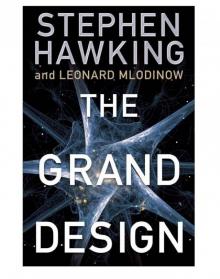 The Grand Design
The Grand Design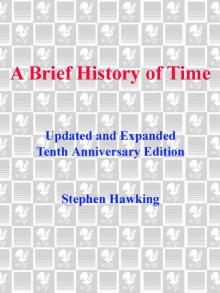 A Brief History of Time
A Brief History of Time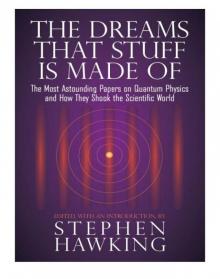 The Dreams That Stuff is Made of
The Dreams That Stuff is Made of My Brief History
My Brief History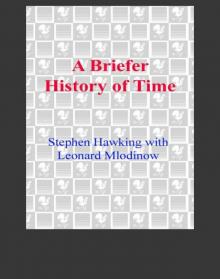 A Briefer History of Time
A Briefer History of Time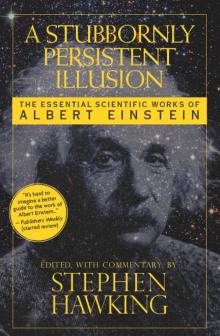 A Stubbornly Persistent Illusion
A Stubbornly Persistent Illusion George and the Blue Moon
George and the Blue Moon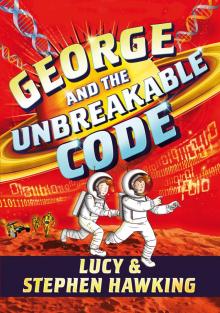 George and the Unbreakable Code
George and the Unbreakable Code Brief Answers to the Big Questions
Brief Answers to the Big Questions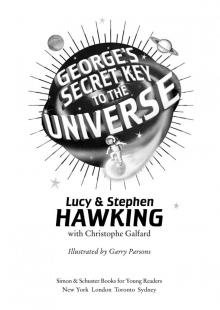 George's Secret Key to the Universe
George's Secret Key to the Universe